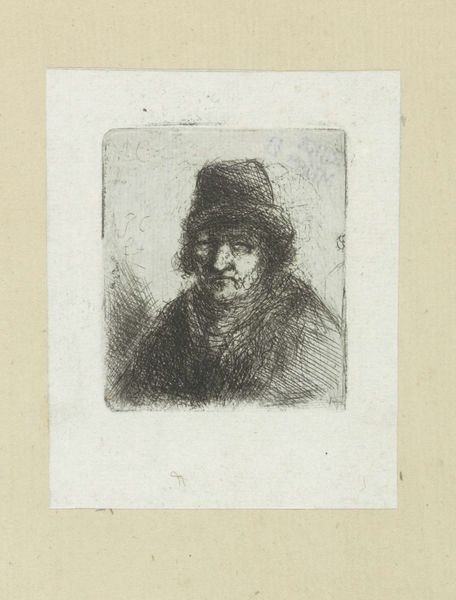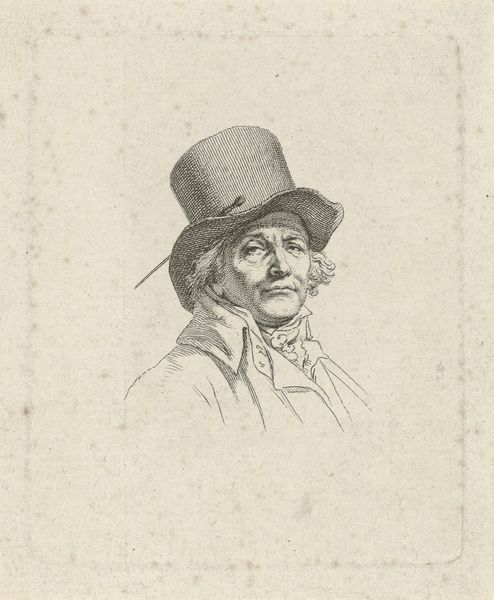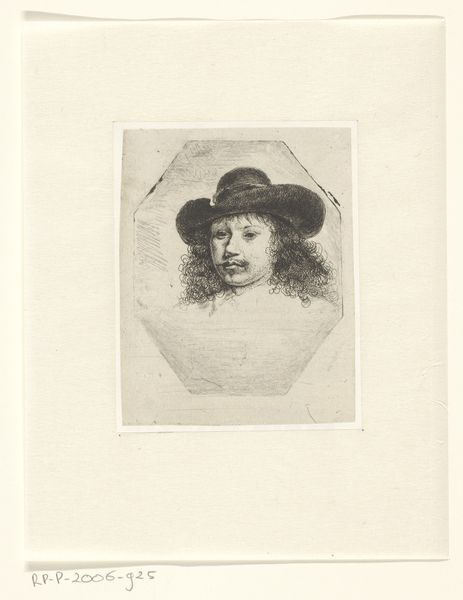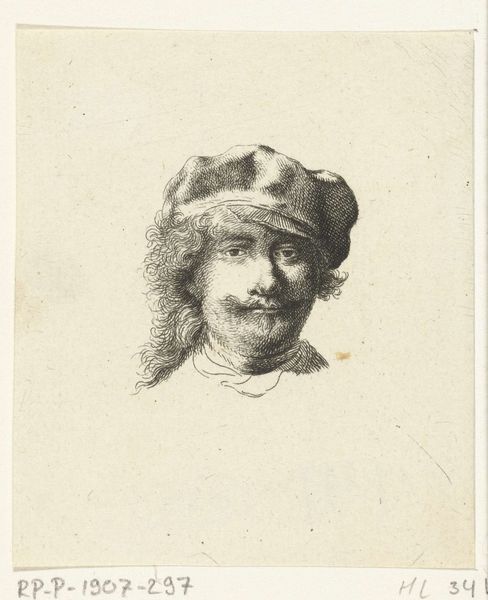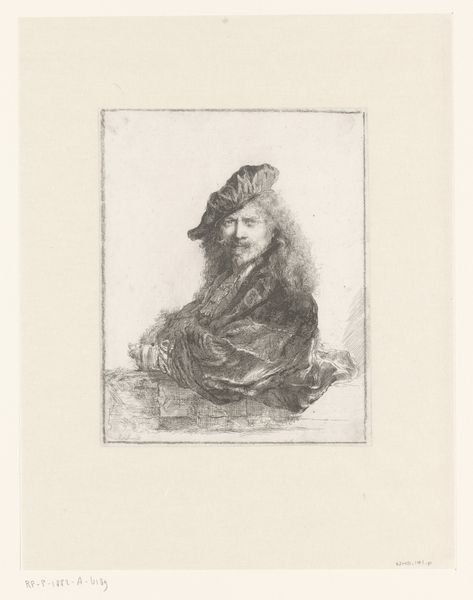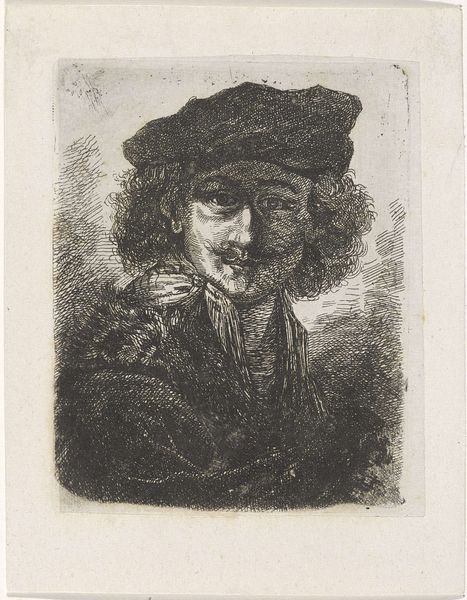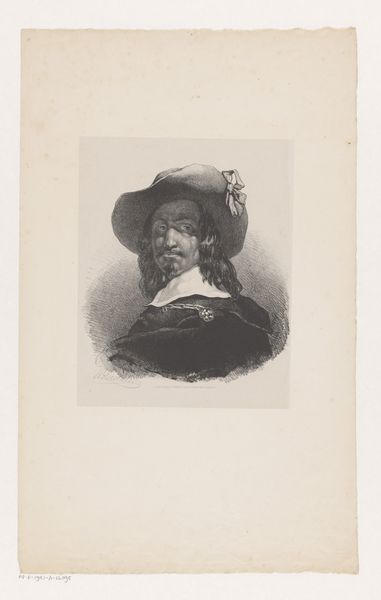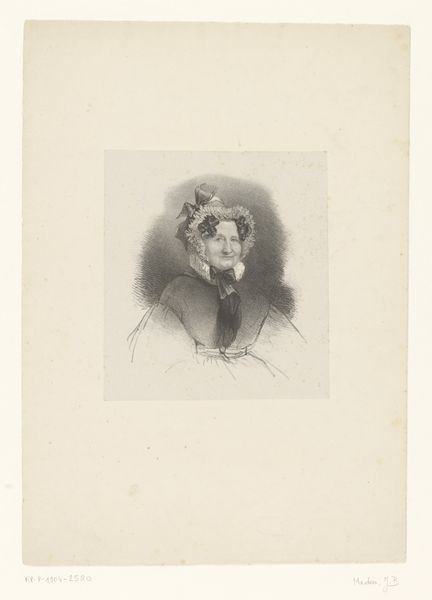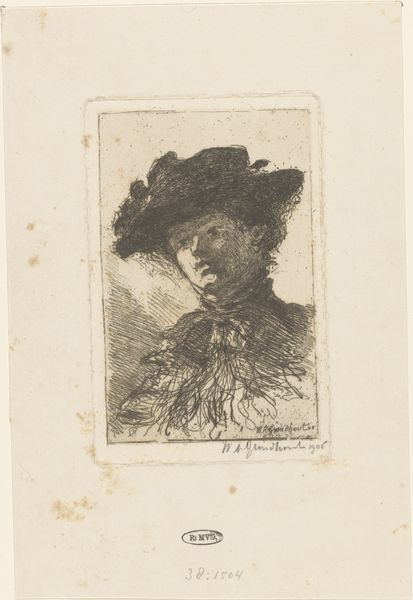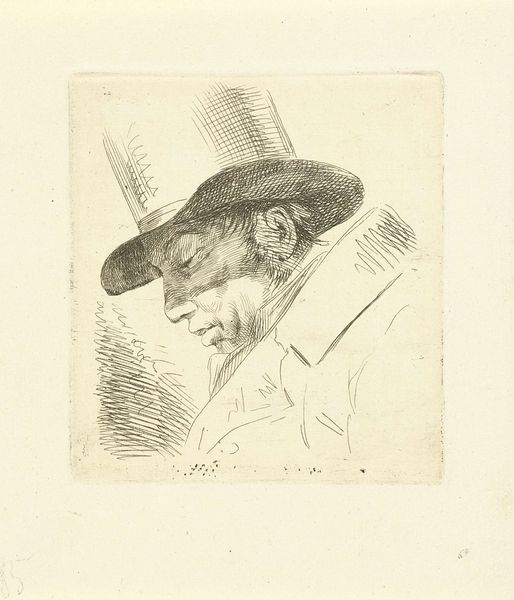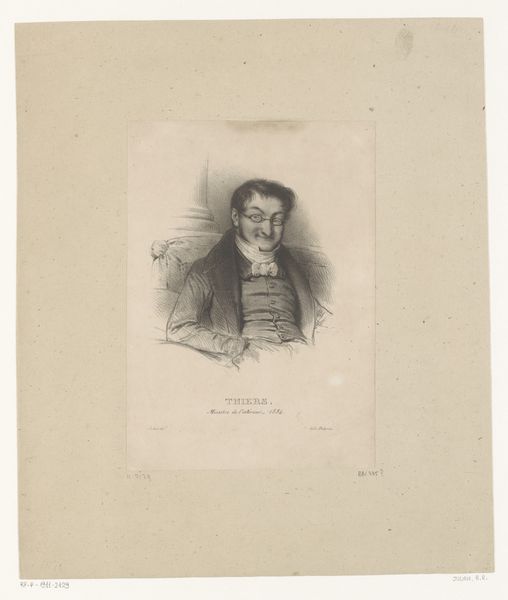
print, engraving
#
portrait
#
light pencil work
# print
#
pencil sketch
#
old engraving style
#
personal sketchbook
#
idea generation sketch
#
ink drawing experimentation
#
pen-ink sketch
#
sketchbook drawing
#
pencil work
#
sketchbook art
#
engraving
Dimensions: height 73 mm, width 63 mm
Copyright: Rijks Museum: Open Domain
Curator: Look at this print, "Portret van Jan Baptist Weenix" created between 1842 and 1843 by Coenraad Hamburger. It's an engraving that captures the essence of the subject with remarkable detail. Editor: Immediately, I'm struck by its antiquated feel and the way the dense hatching defines the form. There's a starkness to the lines, yet it holds an impressive texture. Curator: It is amazing how it reflects the values around the historicization of portraiture and masculine representation. You know Weenix was a renowned painter of hunting scenes. Think of how identity and legacy get constructed through images like this. The portrait seems designed to invoke a certain air of established mastery, and wealth. Editor: Absolutely, it speaks volumes about the processes of printmaking back then. The creation of an engraving like this involves a labour intensive effort of carving lines into a metal plate. I would imagine the cost of the production placed limits on how widely this portrait was made available to the public? Curator: Exactly. What fascinates me is how this form of reproducible image serves as a critical tool to assert and preserve identities. We must examine who decides which faces are etched into collective memory, and what political weight such an image carries. Editor: Thinking of material access, you bring up such a crucial question. Who consumed these portraits, and what role did they play in shaping cultural perceptions, or consolidating power structures? Did such portraits remain mostly confined to elite circles? How was an artisan or artist's labor being viewed at this historical moment? Curator: Those are very relevant questions. Examining it through that lens forces us to consider how power manifests materially, impacting everything from labor practices to identity construction. It asks us to examine all the assumptions embedded within its representation. Editor: For me, analyzing the artistic choices, and what labor practices shaped this portrait unveils the deeper connection between artistic expression, social standing, and power dynamics that all circulated at that particular moment. Curator: Precisely. By understanding the conditions of its production and the forces it reinforces, we can appreciate this artwork, with a deeper more nuanced perspective. Editor: Yes, and it becomes more than just a face from the past; it becomes a snapshot of a complex historical narrative.
Comments
No comments
Be the first to comment and join the conversation on the ultimate creative platform.

